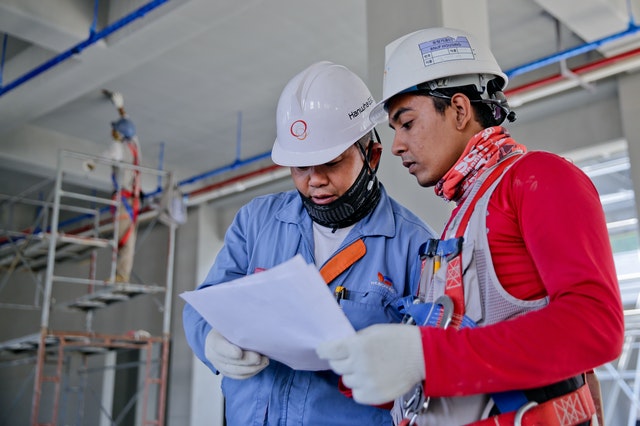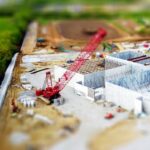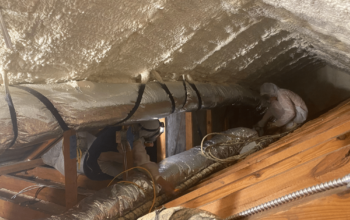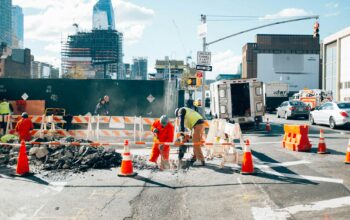Construction Technology has seen innovations in a big and a fast way. Be it robots, cloud-based tech, wearable tech, sensors, smart tech, virtual reality, IoT, 5G, artificial intelligence, or pollution curbing buildings.
This sector has seen a lot of development and improvement for ease and convenience. Companies in this sector are continually adapting to evolving technologies to keep themselves par to others and the market. In this article, the primary three construction technology innovations will be understood that can change the construction site in 2021.
Construction Technology uses smart and advanced technology to make construction work easy, convenient, and error-free. It includes navigation, monitoring, assessing the workers’ safety, danger areas, transportation of materials, viewing and observation of the work, etc.
1. IoT-Internet of Things
Internet of Things is a crucial part of construction technology. It is made of sensors and smart devices that have controlled data sharing through a central platform. It has transformed the operation in this sector hugely. You can put sensors in things like a traffic cone, in a lobby, or in any construction item to monitor and gather information. This makes the operation smarter, safer, and useful.
IoT can affect construction in many ways, like:
- Smart technology can perform tasks that are repetitive and need consistent maintenance. For instance, a cement mixer can sense when there are low cement and order for more. This way, productivity, and efficiency is boosted.
- Footfall and site monitoring for workers check-in and application induction
- Minimizes heavy paper tasks and time-saving
- Enhanced safety by identifying dangerous regions and geo-location in a site of construction using smart tech for alerting workers in the area
- It can minimize the carbon footprint using smart tech. The vehicle is embedded with sensors to switch off an idle engine, measure wastage, and manage data for better planning.
2. Drones and Robotics
Drones, also known as UAV-Unmanned aerial vehicles, are becoming common in construction sites for monitoring and navigation. To inspect and survey vast land regions in less time, UAVs help a lot. They improve productivity, precision, and safety on the construction site.
Robotics helps in approvals, safety, and privacy implementation in construction. They are useful to perform non-variable and repetitive tasks. They make massive and more prolonged tasks easier and efficient.
Robotics and Drones can help in construction in:
- A drone is equipped with aerial imaging, interactive 3D, topographical models, maps, and volume measurements.
- A drone will help you view hard to reach areas like tall buildings, bridges, and so on.
- Drones monitor site safety.
- Drones pave the way to aerial viewing, giving a bird’s eye view of the construction project. This helps in evaluation, analysis, and observation.
- Drones can deliver the construction materials to the site minimize the number and need of vehicles.
- Robots increase the quality and speed of work, such as masonry and bricklaying.
- Demolition of construction components can be done using safer demolition robots.
- Use of autonomous or remote control vehicles.
3. AI-Artificial intelligence and MI-Machine learning
AI mimics human behavior, and MI uses statistical techniques from data. MI doesn’t need any explicit programming. A computer system that programs machines, robots, designs buildings, and calculates automatically is the current advanced technology in construction. It benefits the industry by saving time and money.
AI and MI can help construction in:
- Construction design prediction taking location, weather and creating building design to enhance the building lifetime
- MI explores variations and creates alternatives to present design considering the electrical, plumbing, and mechanical systems. It ensures no clash of MEP systems with the architecture of the building
- AI-driven systems permit repetitive tasks to enhance safety and productivity.
- AI and MI use historical data for better project and financial management.
- AI and MI enhance workers’ safety and identify the dangerous regions in the site to alert workers.
Conclusion
Construction technology has developed immensely with the latest smart tech, sensors, data management, AI, MI, etc. The three primary and influential construction technologies have been discussed here. There are many more like virtual reality, Big Data, Augmented reality, Cloud technology, 3D printing, building information modeling, and so on.
Incorporating these technologies into current construction sites and operations, safety, productivity, time efficiency, cost efficiency, and task monitoring improves in a big way. It makes the construction project an overall success in efficiency and price.
Related Posts












